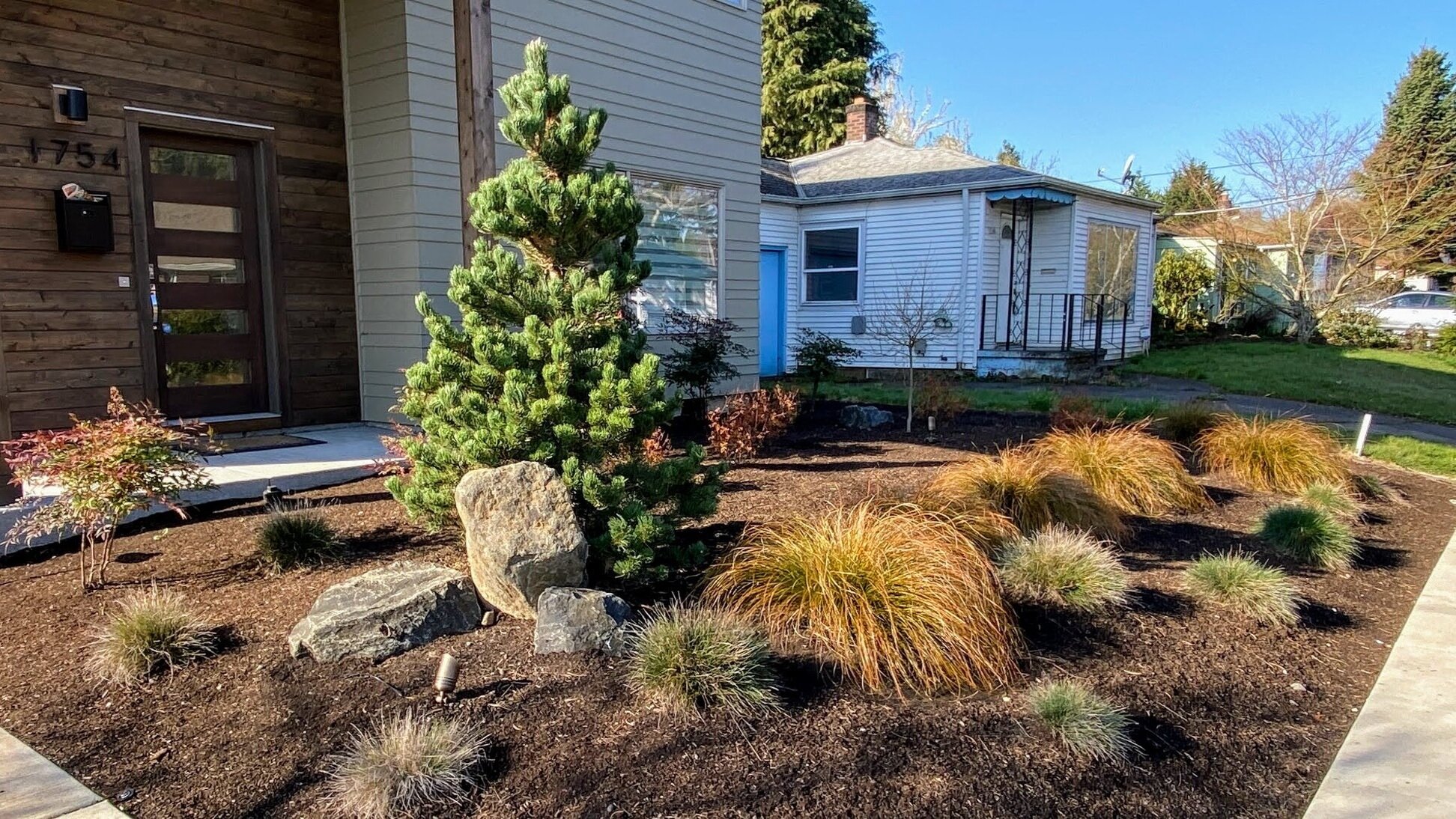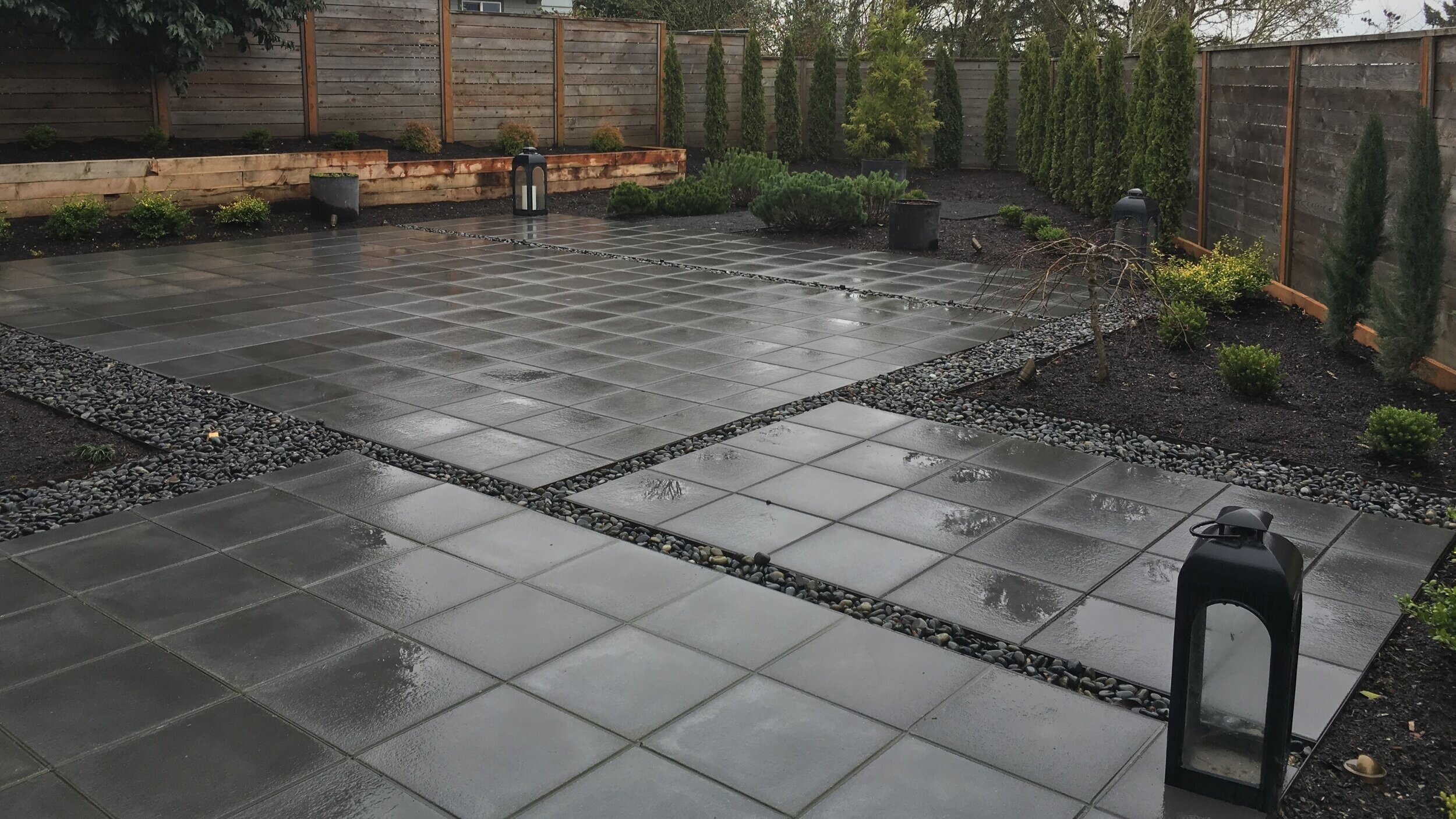Low Maintenance Landscaping- It It Really What You Want?
I email, talk on the phone, and meet with dozens of people every month. They all need help with their landscape in some way. And many, if not most, say they want "low maintenance landscaping". What does that even mean?
"Low maintenance" is subjective. Some people are fine with 2-3 afternoons spent in the garden each month. Others just want a lawn care crew to be able to handle it all in 20-30 minutes a week. Then there are the people who really want NO maintenance (and a unicorn for a pet). I can design a landscape that is genuinely low maintenance, but I keep running into a problem.
My clients say they want a low maintenance garden, but won’t make the sacrifices necessary to have one.
I frequently present V1 of a landscape design, something that will be very easy to care for (and nice looking too), only to find that every change requested by my client undermines that goal. This is true even when I make it clear that certain plants, techniques, and elements are being suggested because they keep maintenance low.
Maybe the problem is that I don’t discuss what “low maintenance” means ahead of time? Below is an incomplete list of techniques, elements, trade offs, and concepts that come into play when designing for less maintenance. If you really want a low care garden, this is what to expect:
The right plant in the right place. Plants that spread are fine, as long you plant them where they have room to do so. But if you plant Creeping Jenny and think it won't creep? You will have to be cutting it back and pulling it out. Large plants are fine too, as long as they have space to mature. Don't plant Pampas grass in your parking strip. It's like buying a Great Dane for your tiny house.
Hardscape. Gravel is much easier to mow than grass (that might not be true, but you know what I mean). Patios are not needy. Walkways don't demand weekly attention. A dry garden is one place where weed barrier actually works. The investment in hardscape is often substantial, but the payoff is in years of gardening free summer Saturdays. Some of this hardscape may not even be functional, but it can be beautiful.
Embrace negative space. You don't have to plant every square inch of your landscape. If you choose your plants carefully, and place them thoughtfully, you can create open spaces that have contours and meaning. And guess what? Empty spaces require some maintenance, but it is very simple: pull weeds, remove leaves.
Don’t leave any open space. Wait, what? If you don’t want bare dirt or bark dust, then we have to plant everything. The plants will out compete the weeds, and when a leaf drops you won’t even see it. BUT- you have to be comfortable with beautiful chaos and may need to adjust your expectations for what a garden should look like. A “Dutch Wave” style garden, for example, can be very low maintenance- but dormant plants are left in place until you cut swaths of the garden down to ground and then wait for them to sprout. Also, planting heavily usually means spending heavily.
Limit the variety of plants. What is easier to maintain: (1) an azalea, a Japanese forest grass, and a coneflower or (2) three Japanese forest grasses. If you said “2”, you are correct. Mass plantings of a select few varieties will allow you to make a huge impact on your garden without raising the level of maintenance. You will be caring for areas, not individual plants. This technique is used to fantastic effect in many great commercial gardens, like the one at Nike’s Hillsboro hangar. If you are given a design that uses 12 carefully chosen plants, and you add in another 12 varieties- your maintenance has just gone way up.
Clean lines are easier to maintain. In general, a garden with clearly defined spaces will be easier to care for. This means that, on paper at least, your design may look a bit modern.
Appreciate more than just blooms. The best plants for a low maintenance garden are evergreen, slow growing, have great structure that will rarely need to be pruned, have some color and texture, and may not ever bloom. If flowers are what you value most in plants you will struggle to have a truly low maintenance garden.
Rethink your lawn. You may need less lawn. Perhaps you should have no lawn, they are pretty needy after all. More likely though, you just need a better lawn. An eco lawn, made up of a mix of grass and other low growing plants, is a very low maintenance way to cover a large space. However, it won’t look like a putting green and you need to be comfortable letting it get a little shaggy. But hey, you do get flowers here!
Keep things simple. Simple layouts, simple materials, minus the flourishes that make a garden a Pinterest star. This is what we want when we want low maintenance. Don’t grow grass in between your pavers; it has to be mowed, edged, and watered more than the rest of your lawn. Don’t dedicate space to vegetable gardening if you don’t already do it; nature will grow weeds for you…..
OR, be ready to spend. You can have a high concept, lush, colorful, and low maintenance garden. But it can’t also be low, or even moderate, budget. We will be investing in hardscape, lots of plants, labor intensive installation methods, and some premium materials. And it probably won’t be low maintenance right at first, so you will want to hire someone to care for it.
I love designing low maintenance gardens- they are a challenge. So if you want to spend time enjoying your garden, but not working in your garden, adjust your expectations and you can have just that. And don’t worry, well designed landscape can be both attractive and low maintenance.
Not sure you can pull that off alone? Feel free to contact a landscape designer for help!








